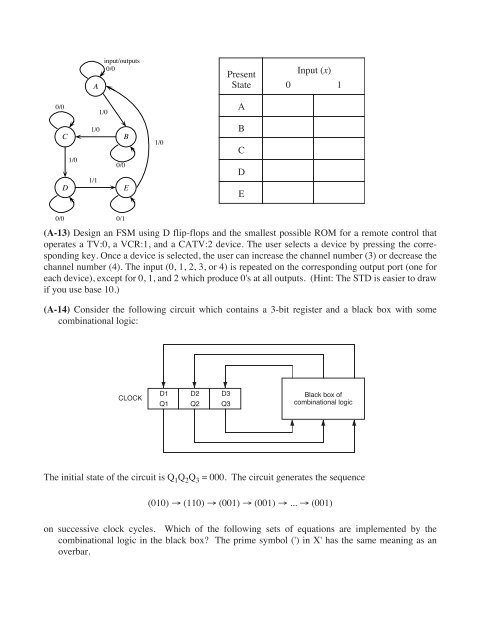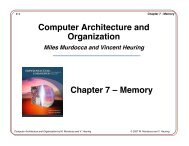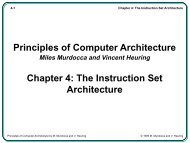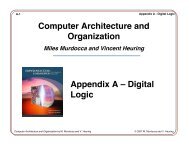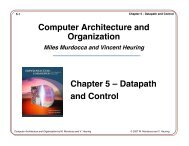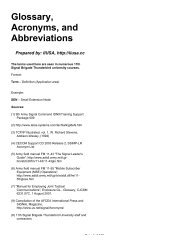COMPUTER ARCHITECTURE AND ORGANIZATION: An ... - IIUSA
COMPUTER ARCHITECTURE AND ORGANIZATION: An ... - IIUSA
COMPUTER ARCHITECTURE AND ORGANIZATION: An ... - IIUSA
Create successful ePaper yourself
Turn your PDF publications into a flip-book with our unique Google optimized e-Paper software.
0/0<br />
A<br />
input/outputs<br />
0/0<br />
1/0<br />
1/0<br />
C B<br />
1/0<br />
0/0<br />
1/1<br />
D E<br />
0/0 0/1<br />
1/0<br />
Present<br />
State<br />
A<br />
B<br />
C<br />
D<br />
E<br />
Input (x)<br />
0 1<br />
(A-13) Design an FSM using D flip-flops and the smallest possible ROM for a remote control that<br />
operates a TV:0, a VCR:1, and a CATV:2 device. The user selects a device by pressing the corresponding<br />
key. Once a device is selected, the user can increase the channel number (3) or decrease the<br />
channel number (4). The input (0, 1, 2, 3, or 4) is repeated on the corresponding output port (one for<br />
each device), except for 0, 1, and 2 which produce 0's at all outputs. (Hint: The STD is easier to draw<br />
if you use base 10.)<br />
(A-14) Consider the following circuit which contains a 3-bit register and a black box with some<br />
combinational logic:<br />
CLOCK<br />
D1<br />
Q1<br />
D2<br />
Q2<br />
D3<br />
Q3<br />
Black box of<br />
combinational logic<br />
The initial state of the circuit is Q 1 Q 2 Q 3 = 000. The circuit generates the sequence<br />
(010) → (110) → (001) → (001) → ... → (001)<br />
on successive clock cycles. Which of the following sets of equations are implemented by the<br />
combinational logic in the black box? The prime symbol (') in X' has the same meaning as an<br />
overbar.


